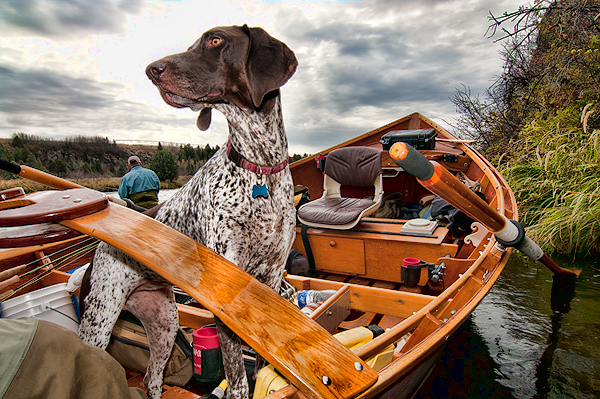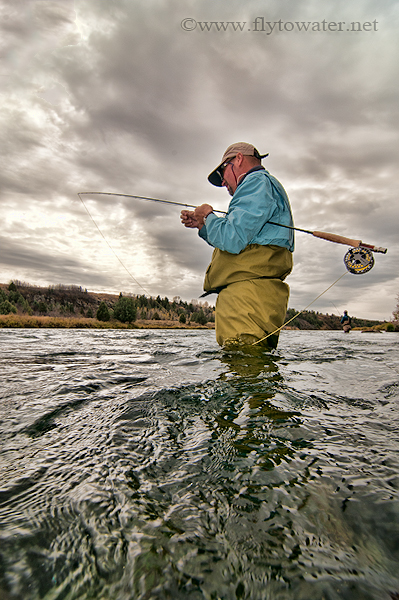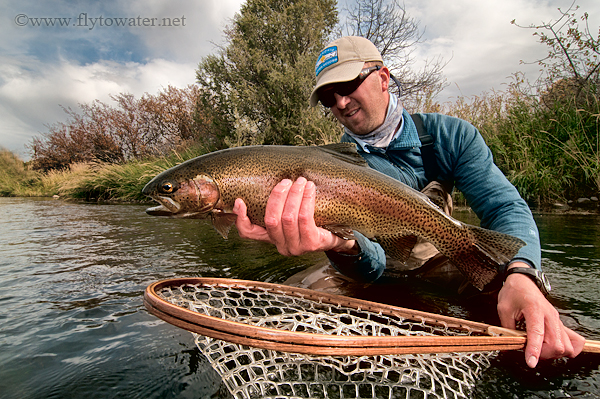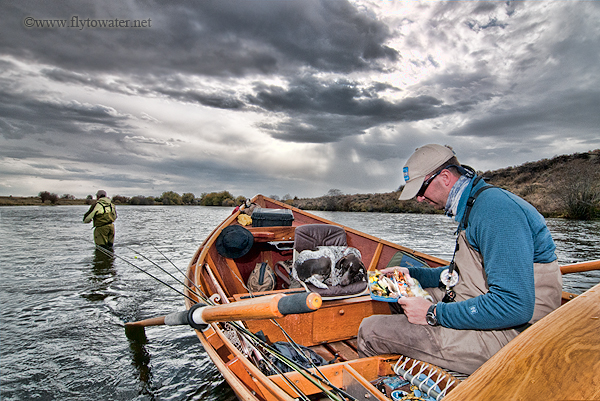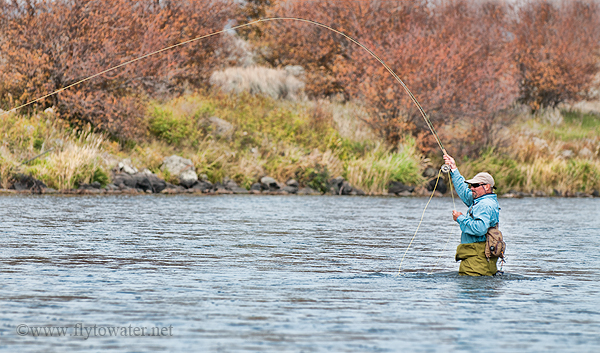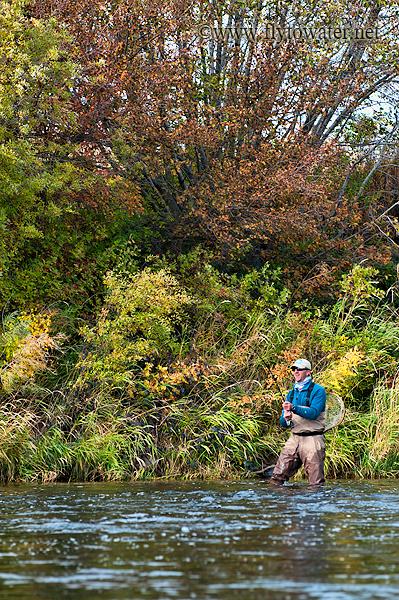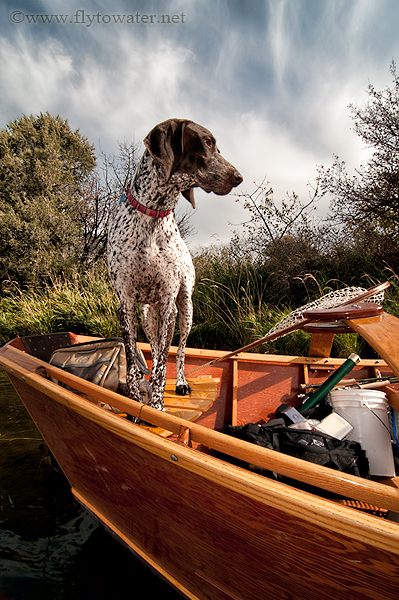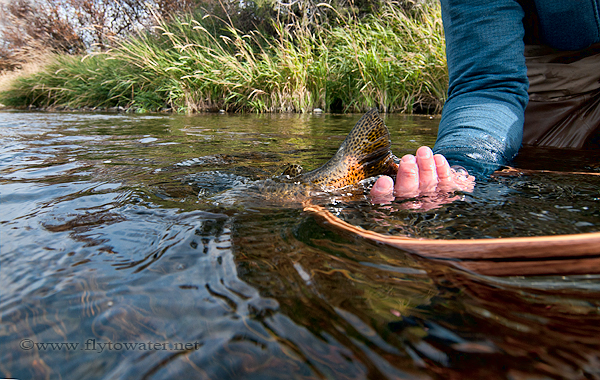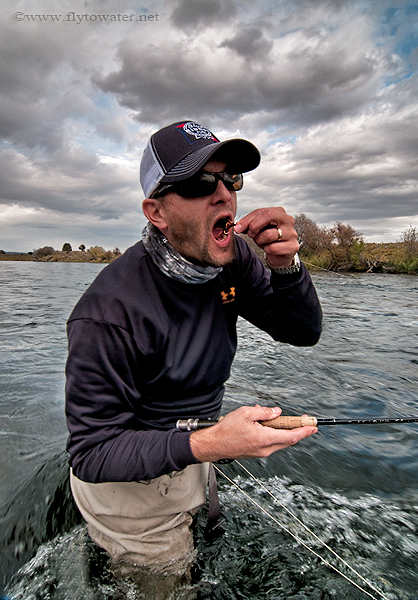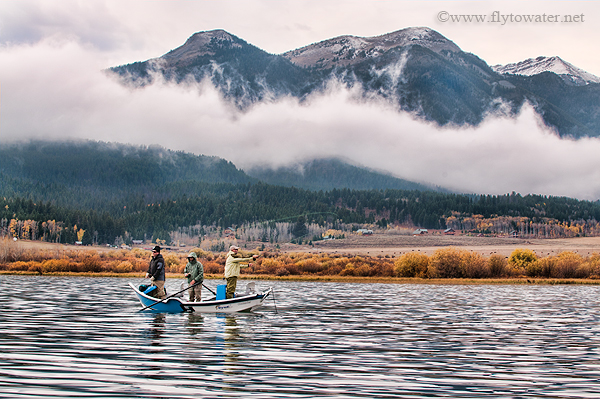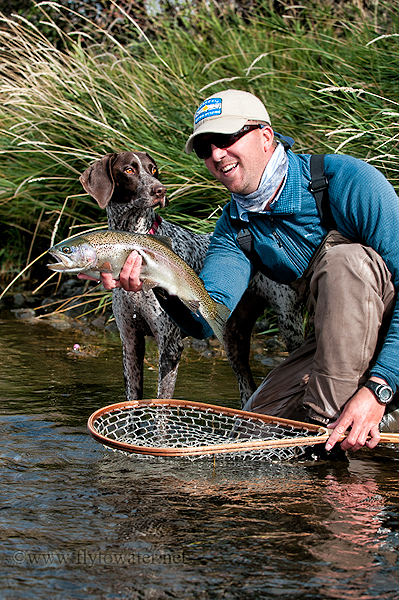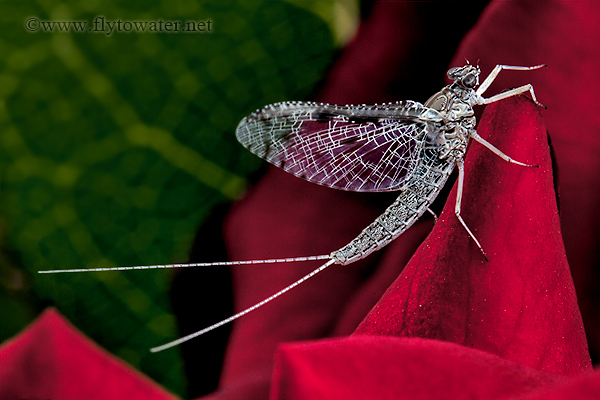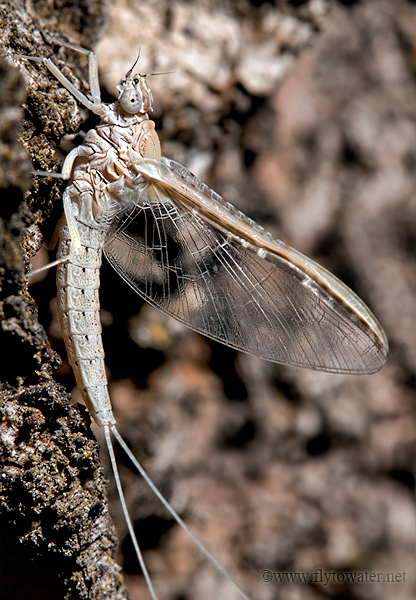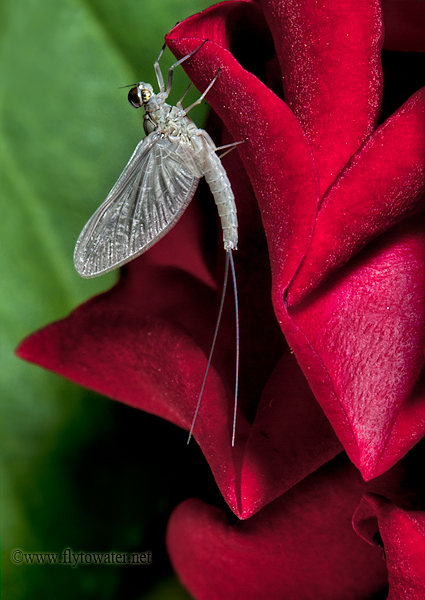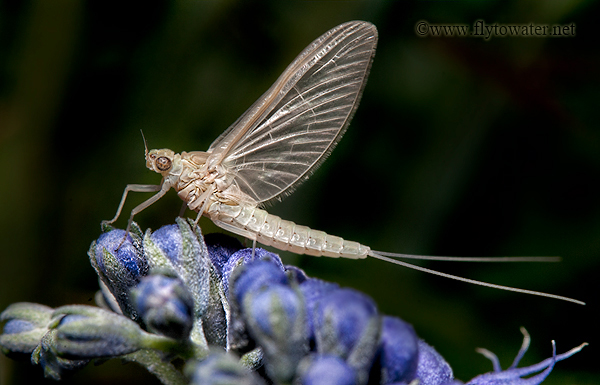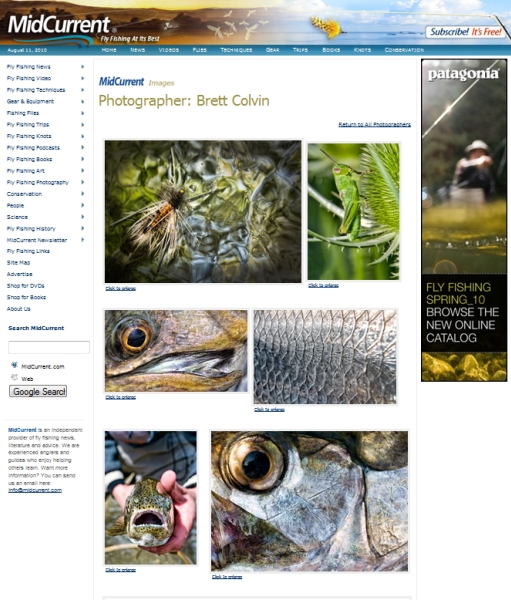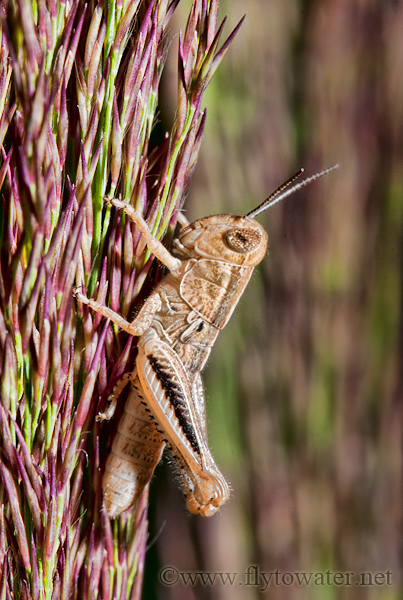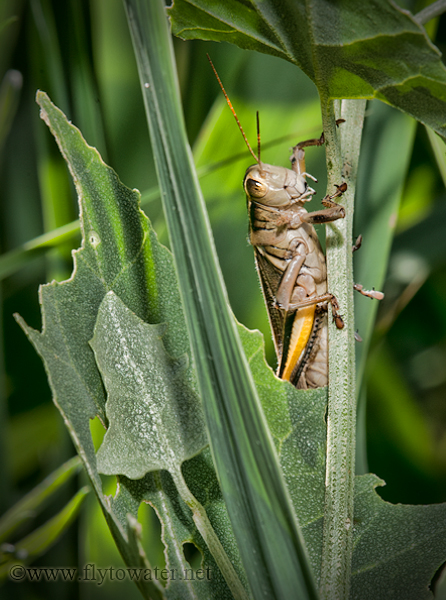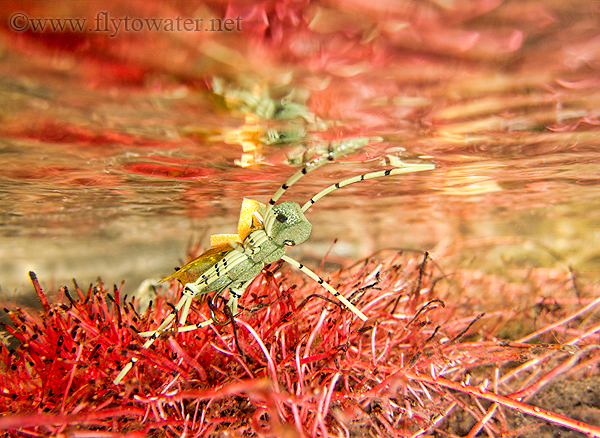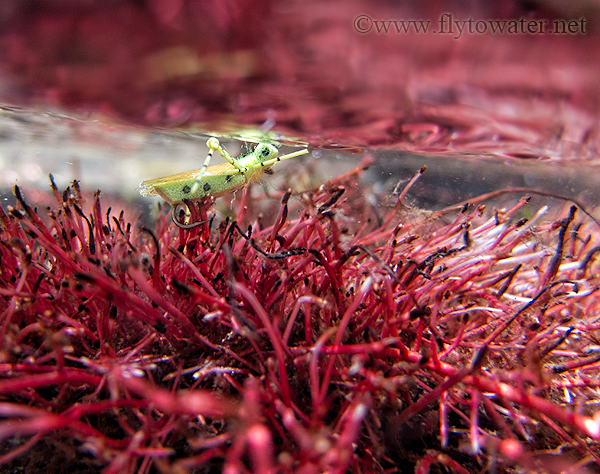People often accuse me of using excessively large words to express myself. I am mildly offended by these outrageous accusations, because my stated policy is to eschew obfuscation.
By way of rebuttal, I offer up my word of the day: ANTHROPOMORPHISM.
As everyone has known since 1753 (the first recorded use of this term according to Merriam Webster), anthropomorphism is the attribution human characteristics to inanimate objects.
What does this word have to do with better wildlife imagery? Simple - no other art form has such a high level of anthropomorphizing as photography. Our society loves a quick fix, and many feel that an eye-popping result is the natural, native output of expensive technology.
Upon seeing a compelling image, the first question usually posed to the photographer is, "What camera/lens do you use?" This can be a legitimate question for a number of technical reasons, but is more often symptomatic of the belief that "professional" gear was the main reason for the engaging outcome. This phenomenon has camera companies dancing the Light Fantastic, but for everyone else it's a simple delusion.
The first step towards better wildlife photography is to stop attributing the hard work, creativity, patience, practice, and skills that are critical for success to inanimate tools. These are all human traits - merits of photographers, not cameras. Step 1 is to quit anthropomorphizing, and start creating using whatever is in your bag.
The most important elements of a compelling wildlife image are light, composition, opportunity, and exposure (in no particular order). Cameras and lenses have no part in the first 3, and only a supporting role in the 4th.
LIGHT: Learning to "see" light, and recognize the characteristics that translate into various artistic outcomes is a skill that takes years to develop. Volumes have been written on this topic, and doing a Google search for "golden hour" will probably provide all you ever want to know about ideal illumination. To achieve the result you want as a photographer, your boots need to be on the ground (with you in them) when the light is right.
COMPOSITION: The way in which objects are arranged (intentionally and creatively) within the frame. There is nothing about composition that should be left to chance. Inclusion, exclusion, angle of view, position relative to the subject(s), portrait vs. landscape orientation, foreground, background, and many other considerations play an enormous part in how the viewer will interpret a 2-dimensional image. A great starting point on this topic is a book called "Photographic Composition" by Grill and Scanlon ($15 on Amazon). In this shot of a wild chukar partridge, I included both cheat grass in the foreground and sage brush in the background as compositional elements, but used shallow depth of field to isolate the subject. The bird is also positioned according to the Rule of Thirds.
OPPORTUNITY: Think of 3 separate lines converging at different angles. One of these lines represents the right lighting conditions. The second is your wildlife subject, which will be somewhat unpredictable and dynamic. Line #3 represents surroundings that create a pleasing foreground, background, and overall composition. When each of these elements converge and intersect, the result is a window of opportunity . All 3 elements must be present to win. While some opportunities happen by chance, most are created through careful planning, understanding of subject behavior, a high degree of familiarity with your camera controls, awareness of your limitations, and a constant readiness to act.
The single most challenging part of wildlife photography is getting close enough to the wildlife. Many point & shoot cameras offer 8x, 10x, or even 20x optical zooms in tiny little packages. The uninitiated often see huge telephoto lenses and assume they are camera-mounted galactic telescopes with the ability to capture amazing images of sparrows at 300 meters.
The truth is that big lenses are designed to let in more light, allowing for faster shutter speeds while maintaining high optical quality. The Nikon 400mm f/2.8 VR lens costs $9000 and weighs 13 pounds, but only provides the equivalent of 8x optical magnification. As a photographer, you need to be every bit as close to your subject with a super telephoto prime lens as you would with a cheap 8x point and shoot. Most quality wildlife imagery is captured inside of 60 yards, and often much closer (especially with smaller subjects). The coyote pictured below was 35 yards away, and was only in this position looking back at me for about 1 second.
Working hard to pattern wildlife subjects and understand their behaviors will allow you to anticipate their location during ideal lighting conditions. In turn, this will improve your ability to be in the right place at the right time. Wildlife photographers spend most of their day scouting, observing, getting into position, and waiting. There is no magic bullet lens, teleconverter, or 25 megapixel sensor that will buy sweet monkey love over long distances. If the subject is too far away for a solid image to be captured, it's not a shortcoming of the equipment - but of the photographer's ability to close the distance.
EXPOSURE: Today's cameras all offer the pixie dust of Auto Mode - the enemy of creativity. Auto Mode is designed for one thing: Boring-Ass Snap Shots, or B.A.S.S. While the camera's electronics can interpret a scene and correctly expose the photograph for you, they cannot detect your vision of the final image.
Decisions to freeze action, blur motion, isolate a subject with shallow depth of field, or include both foreground and background elements in the composition are all consequences of different exposure choices. These strictly artistic decisions are directly related to how the viewer will connect to your image, and can't be left to a generic, pre-programmed function.
The good news here is that there are only about 5 key camera controls that do most of the legwork. Check out "Understanding Exposure" by Bryan Peterson ($15 on Amazon) if terms like aperture, f-stop, shutter speed, white balance, exposure compensation, and ISO are unfamiliar.
In these final 2 shots I used exposure for different effects. The mallard drake was stationary, and I wanted the colors and plumage of the bird to be the primary focus. Using a longer shutter speed I achieved motion blur in the faster moving background water, while maintaining sharpness on the bird itself. In the case of the coyote, I chose to freeze motion with a shutter speed of 1/3200 to capture his predatory intensity.
The moral to the story - use what you've got and don't put off chasing the imagery you desire until you have a better camera body or longer lens. Procrastination should not lilt off the tongue any easier than anthropomorphism - which is only 1 letter longer.
I'm wishing everyone a happy and prosperous New Year in 2011. Thanks for dropping in.
Wednesday, December 29, 2010
Better Wildlife Photography
Labels:
Better,
Fly to Water,
How-to,
Instructions,
Photography,
Take,
Tips,
Wildlife
Thursday, December 2, 2010
FlyFisher Magazine
The Federation of Fly Fishers is one of the premier organizations dedicated to conservation, preservation, and education in the world of fly fishing. Whether you're just getting started in the sport, or have the veteran status marked by a vehicle festooned with decals - anytime is a good time to join.
http://www.fedflyfishers.org/
One of the perks of membership is a subscription to FlyFisher Magazine.
FFF can also be found on Facebook.
I appreciated working with Al Beatty on the cover of the Autumn 2010/Winter 2011 cover of FlyFisher this past month. "Mr. December" is Worldcast guide Casey Birkholz. This image was taken 10/15/2010 using a Nikon D300, Tokina 12-24mm lens, and a Tiffen HT 0.6 ND Grad Filter.
http://www.fedflyfishers.org/
One of the perks of membership is a subscription to FlyFisher Magazine.
FFF can also be found on Facebook.
I appreciated working with Al Beatty on the cover of the Autumn 2010/Winter 2011 cover of FlyFisher this past month. "Mr. December" is Worldcast guide Casey Birkholz. This image was taken 10/15/2010 using a Nikon D300, Tokina 12-24mm lens, and a Tiffen HT 0.6 ND Grad Filter.
Tuesday, November 2, 2010
In Memory of Rich Schaaff
Nature's first green is gold,
Her hardest hue to hold.
Her early leaf's a flower,
But only so an hour.
Then leaf subsides to leaf.
So Eden sank to grief,
So dawn goes down to day.
Nothing gold can stay.
-Robert Frost
Her hardest hue to hold.
Her early leaf's a flower,
But only so an hour.
Then leaf subsides to leaf.
So Eden sank to grief,
So dawn goes down to day.
Nothing gold can stay.
-Robert Frost
In many ways getting to know Rich Schaaff was like striking gold. He was as genuinely kind a man as I've come across in any facet of life.
May every run hold a fish, and every swing bring a strike where your journey has taken you my friend. Rest in peace.
www.eastforkfly.com
Friday, October 22, 2010
Uncle Bob's Cabin
Drinking. Stripping. Debauchery of biblical proportions.
These are not references to Las Vegas, but rather to an annual pilgrimage that I've heard spoken of in hushed tones by certain members of the fly fishing community. Over the years fragments of unsubstantiated rumor have reached my ears regarding this event, and I was aware that it took place in the vicinity of Island Park, Idaho. I had also heard tales of a mysterious cabin in the woods where unspeakable rituals were enacted, led by a man known only as Uncle Bob.
When an opportunity arose to pledge this fraternity of the fly, I jumped at the chance. Admittedly I was caught off guard when the stripping was performed by a man named Layne following a bizarre self-baptism episode in prime trout habitat. Had this information been disclosed at the outset I may have reconsidered, but hindsight is always 20/20.
Having met up with several well-established members of the Brotherhood of the Wading Pants, drift boats were immediately set afloat. I was instructed to board a vessel containing JayMorr, Layne, Brika (the trout-sniffing GSP), and Casey (who claims to be a guide for Worldcast Anglers). The guiding credentials would later be called into question.
Right off the bat it became apparent that Layne had not yet developed what the medical community commonly refers to as The Morrison Reflex. Anyone who regularly fishes with JayMorr instinctively grips their newest rod with Herculean force any time he approaches to within a 15-yard radius. This phenomenon is called a "reflex" because the action is triggered from the brain stem itself without conscious thought. Attempting to process proximity information in the cerebral cortex takes a split second, during which time JayMorr will have already secured the highest quality fly rod in the boat and made no less than 3 casts.
My own Morrison Reflex has been honed to the very limits of mammalian capacity. Adopting a threat posture between Jay and my favorite 6-weight, I was not surprised to see a blur-like motion in the vicinity of Layne's brand new Sage Z-Axis. Before the anchor had even grazed the river bottom at our first wade fishing location, my ears caught the faint swishing of wader legs scissoring through the current as JayMorr vectored across the river with Layne's virgin graphite glinting faintly in his hand.
"Whoops I think Morrison just grabbed my Z-Axis by mistake," stammered Layne. Casey, Brika, and I all enjoyed some hearty laughter from this classic 1-liner.
"Good thing you brought that ultralight dry fly rod as a spare," I remarked, still chuckling at Layne's hilarity. "It's not ideal for articulated streamers with lead eyes, but you'll get used to it."
Jay then proceeded to catch the first fish ever on the new rod - a nice rainbow - while Layne feverishly attempted to throw a size 4 weighted stonefly setup under a voluminous indicator using his delicate dry fly rig.
It was around this time that Casey's guide credentials began to appear suspect in my opinion. I will mention here that he invariably displayed expert skills as an oarsman, read the river with great wisdom, and provided perfect advice about fly selection and fish location.
As it turns out, Casey has Angler's Tourette Syndrome, or ATS. This condition causes him to suddenly yell out the term "26-inch brown trout!" at socially inappropriate times.
For example, at one point he made the comment, "Yesterday I saw a pair of TWENTY-SIX INCH BROWN TROUT! near the head of this run." Fishing the location resulted in catching a pair of mountain whitefish. This scenario repeated itself until it became a pattern, and at the time of this writing I'm not certain that Casey can actually tell the difference between a 26-inch brown trout and a W.O.U.S. (Whitefish Of Unusual Size).
Brown trout may not be the only species impacted with mistaken identity either. Later in the float, Casey positioned himself on a bridge and began directing Layne into a particularly deep and swift run. "If you can work your way out another 20 feet, there's a TWENTY-PLUS INCH RAINBOW TROUT! holding near the seam." Unbeknown to me at this time was Layne's nickname of Captain Nemo, which he has acquired over the years due to his propensity for spontaneous full-body immersion in bodies of water all across the hemisphere.
Without warning, Layne suddenly began performing what I can only describe as a series of Russian Squat Kicks in the middle of the river, culminating in a maneuver that left only his eyeballs exposed above the surface of the water. It seems as though the purpose of full submersion was to obtain maximum purchase on the riverbed, because he then shot out of the water like a Trident Missile and headed for shore at planing speed. The remainder of the story is not suitable for young viewers, but suffice it to say that images from those events remained emblazoned on my retinas well into the blackness of the ensuing night.
After Layne went under, Casey again commenced gesturing wildly and yelled, "Colvin! If you can just make it 20 feet beyond where Captain Nemo filled his waders and nearly got swept downstream that fish is still there!"
Mentally pushing aside everything I had just witnessed, I braced myself against the current and worked my way into a precarious position for a chance at this slab rainbow. Finally, as my rubber-soled boots began losing traction on the mossy cobblestones and the water was lapping at the top of my chest waders, I wedged my foot against a rock and cast into the seam. "Perfect!" Casey announced. Midway through the drift I tied into the fish, and had to reverse my route back towards shore while the fight was underway.
Eventually I negotiated the hazards successfully and landed my quarry - a Whitefish Of Unusual Size.
There is much more to the story than what I have recounted here, but in yet another similarity to Las Vegas...
What happens at Bob's cabin stays at Bob's cabin.
Many thanks to Bob, Jason, Mike, Casey, Layne, Brika, and JayMorr for the great time I had on the trip. I enjoyed time on the water, tremendous hospitality at the cabin, and friendships both old and new.
These are not references to Las Vegas, but rather to an annual pilgrimage that I've heard spoken of in hushed tones by certain members of the fly fishing community. Over the years fragments of unsubstantiated rumor have reached my ears regarding this event, and I was aware that it took place in the vicinity of Island Park, Idaho. I had also heard tales of a mysterious cabin in the woods where unspeakable rituals were enacted, led by a man known only as Uncle Bob.
When an opportunity arose to pledge this fraternity of the fly, I jumped at the chance. Admittedly I was caught off guard when the stripping was performed by a man named Layne following a bizarre self-baptism episode in prime trout habitat. Had this information been disclosed at the outset I may have reconsidered, but hindsight is always 20/20.
Having met up with several well-established members of the Brotherhood of the Wading Pants, drift boats were immediately set afloat. I was instructed to board a vessel containing JayMorr, Layne, Brika (the trout-sniffing GSP), and Casey (who claims to be a guide for Worldcast Anglers). The guiding credentials would later be called into question.
Right off the bat it became apparent that Layne had not yet developed what the medical community commonly refers to as The Morrison Reflex. Anyone who regularly fishes with JayMorr instinctively grips their newest rod with Herculean force any time he approaches to within a 15-yard radius. This phenomenon is called a "reflex" because the action is triggered from the brain stem itself without conscious thought. Attempting to process proximity information in the cerebral cortex takes a split second, during which time JayMorr will have already secured the highest quality fly rod in the boat and made no less than 3 casts.
My own Morrison Reflex has been honed to the very limits of mammalian capacity. Adopting a threat posture between Jay and my favorite 6-weight, I was not surprised to see a blur-like motion in the vicinity of Layne's brand new Sage Z-Axis. Before the anchor had even grazed the river bottom at our first wade fishing location, my ears caught the faint swishing of wader legs scissoring through the current as JayMorr vectored across the river with Layne's virgin graphite glinting faintly in his hand.
"Whoops I think Morrison just grabbed my Z-Axis by mistake," stammered Layne. Casey, Brika, and I all enjoyed some hearty laughter from this classic 1-liner.
"Good thing you brought that ultralight dry fly rod as a spare," I remarked, still chuckling at Layne's hilarity. "It's not ideal for articulated streamers with lead eyes, but you'll get used to it."
Jay then proceeded to catch the first fish ever on the new rod - a nice rainbow - while Layne feverishly attempted to throw a size 4 weighted stonefly setup under a voluminous indicator using his delicate dry fly rig.
It was around this time that Casey's guide credentials began to appear suspect in my opinion. I will mention here that he invariably displayed expert skills as an oarsman, read the river with great wisdom, and provided perfect advice about fly selection and fish location.
As it turns out, Casey has Angler's Tourette Syndrome, or ATS. This condition causes him to suddenly yell out the term "26-inch brown trout!" at socially inappropriate times.
For example, at one point he made the comment, "Yesterday I saw a pair of TWENTY-SIX INCH BROWN TROUT! near the head of this run." Fishing the location resulted in catching a pair of mountain whitefish. This scenario repeated itself until it became a pattern, and at the time of this writing I'm not certain that Casey can actually tell the difference between a 26-inch brown trout and a W.O.U.S. (Whitefish Of Unusual Size).
Brown trout may not be the only species impacted with mistaken identity either. Later in the float, Casey positioned himself on a bridge and began directing Layne into a particularly deep and swift run. "If you can work your way out another 20 feet, there's a TWENTY-PLUS INCH RAINBOW TROUT! holding near the seam." Unbeknown to me at this time was Layne's nickname of Captain Nemo, which he has acquired over the years due to his propensity for spontaneous full-body immersion in bodies of water all across the hemisphere.
Without warning, Layne suddenly began performing what I can only describe as a series of Russian Squat Kicks in the middle of the river, culminating in a maneuver that left only his eyeballs exposed above the surface of the water. It seems as though the purpose of full submersion was to obtain maximum purchase on the riverbed, because he then shot out of the water like a Trident Missile and headed for shore at planing speed. The remainder of the story is not suitable for young viewers, but suffice it to say that images from those events remained emblazoned on my retinas well into the blackness of the ensuing night.
After Layne went under, Casey again commenced gesturing wildly and yelled, "Colvin! If you can just make it 20 feet beyond where Captain Nemo filled his waders and nearly got swept downstream that fish is still there!"
Mentally pushing aside everything I had just witnessed, I braced myself against the current and worked my way into a precarious position for a chance at this slab rainbow. Finally, as my rubber-soled boots began losing traction on the mossy cobblestones and the water was lapping at the top of my chest waders, I wedged my foot against a rock and cast into the seam. "Perfect!" Casey announced. Midway through the drift I tied into the fish, and had to reverse my route back towards shore while the fight was underway.
Eventually I negotiated the hazards successfully and landed my quarry - a Whitefish Of Unusual Size.
There is much more to the story than what I have recounted here, but in yet another similarity to Las Vegas...
What happens at Bob's cabin stays at Bob's cabin.
Many thanks to Bob, Jason, Mike, Casey, Layne, Brika, and JayMorr for the great time I had on the trip. I enjoyed time on the water, tremendous hospitality at the cabin, and friendships both old and new.
Labels:
Brook Trout,
Clouds,
Dog,
drift boat,
fly fishing,
Fork,
German Shorthaired Pointer,
Henrys,
Idaho,
Lake,
Photography,
rainbow trout,
River,
Storm,
Wooden
Thursday, September 9, 2010
Greek, Latin, and Mayflies
In Greek, the word "ephemeros" means "short-lived." No one knows why early Greeks chose this term instead of just saying "short-lived."
What we do know is that Order Ephemeroptera is used by scientists to refer to mayflies (presumably because adults are short-lived), and that Greece is bankrupt due to poor toga sales and obfuscation.
However you refer to them, mayflies fascinate fly fishermen (LintFlickus Hookibilis - From Latin, literally meaning "Hooks himself with lint").
Anglers have limited numbers of brain cells by adulthood. Many can attribute this to the cerebral pickling effect of 18-year LAPHROAIG, while others may not have had substantive numbers at birth. Either way, the considerable mental horsepower given to mayflies is noteworthy. For example, when we see a member of Order Diptera, Family Chironomidae floating down the river, the angler may casually refer to the insect as a "midge."
By contrast, when seeing a speckled mayfly on the water, a field identification of "callibaeits" will invariably be used. True, we sometimes cheat and shorten terms like Hexagenia to "Hex" but everyone knows what is implied: If you can't say something smart, say it in Latin.
The mayfly may actually be the "fly" in fly fishing. After all, one of the earliest references to fly fishing (circa 200 AD by Ælian) describes what many believe to be dun imitations.
Hopefully there's a hatch coming to a water near you.
What we do know is that Order Ephemeroptera is used by scientists to refer to mayflies (presumably because adults are short-lived), and that Greece is bankrupt due to poor toga sales and obfuscation.
However you refer to them, mayflies fascinate fly fishermen (LintFlickus Hookibilis - From Latin, literally meaning "Hooks himself with lint").
Anglers have limited numbers of brain cells by adulthood. Many can attribute this to the cerebral pickling effect of 18-year LAPHROAIG, while others may not have had substantive numbers at birth. Either way, the considerable mental horsepower given to mayflies is noteworthy. For example, when we see a member of Order Diptera, Family Chironomidae floating down the river, the angler may casually refer to the insect as a "midge."
By contrast, when seeing a speckled mayfly on the water, a field identification of "callibaeits" will invariably be used. True, we sometimes cheat and shorten terms like Hexagenia to "Hex" but everyone knows what is implied: If you can't say something smart, say it in Latin.
The mayfly may actually be the "fly" in fly fishing. After all, one of the earliest references to fly fishing (circa 200 AD by Ælian) describes what many believe to be dun imitations.
Hopefully there's a hatch coming to a water near you.
Labels:
Callibaetis,
Closeup,
fly fishing,
Macro Photography,
Mayfly,
Super,
Supermacro
Wednesday, August 11, 2010
Midcurrent³
MidCurrent is a healthy part of a fly fisherman's balanced diet. I have been dropping in regularly for a long time due to the well-written articles, knot tying tutorials, podcasts, industry news, and other information that is always readily available.
I have really enjoyed the addition of dedicated sections for featured fly fishing artists and photographers. If you haven't dropped in for a while, definitely check out:
THE ARTIST GALLERY
THE PHOTOGRAPHER GALLERY
I'm honored to have been featured for the 3rd time this week for some of my recent images dealing with summer fly fishing. Clicking on the image below will take you to the updated feature page.
I have really enjoyed the addition of dedicated sections for featured fly fishing artists and photographers. If you haven't dropped in for a while, definitely check out:
THE ARTIST GALLERY
THE PHOTOGRAPHER GALLERY
I'm honored to have been featured for the 3rd time this week for some of my recent images dealing with summer fly fishing. Clicking on the image below will take you to the updated feature page.
Labels:
Bird Photography,
Brett Colvin,
Feature,
Midcurrent,
Photographer
Monday, August 9, 2010
The Hopper
Walt Whitman didn't write much about hopper patterns, but if he had it probably would have gone something like this:
O Hopper my Hopper! Our fishing trip is done,
The line has weathered every cast, the prize we sought is won,
The stream is near, the gurgle I hear, the terrestrials are raging,
With watery eyes the trout apprise, the hopper grim and daring;
But O hop! Hop! Hop!
O the deer hair bullet head,
Where on the current my hopper lies,
Drifting foam and thread.
Why did Whitman avoid the topic of hoppers? It's hard to say. Historians all agree that he was part of the Transcendentalist movement. As everyone knows, this was the idea that fishermen could transcend (rise above) bait and use artificial flies instead.
This in turn gave way to Realism, which was a period where fly tiers spent copious amounts of time making their flies look as real as possible. Beginning in 1865, Realism essentially ended in 1910, although no one informed Graham F. Owen. Residing in Burbank, California, Graham guffaws at historians and continues to tie flies so realistic that several reasonably intelligent movie producers have mistaken them for actual insects. Many of his life-like creations have taken since 1892 to complete, making them contemporaries of Whitman himself.
Realism eventually gave way to Naturalism. This was a time characterized by the more unpleasant and even shocking aspects of fly fishing. Patterns took on an impressionistic look and the hopper, while not embraced, became increasingly common. Naturalism was more of a movement than a formalized period, but was also closely linked to Determinism - wherein man's life came to be dominated by hatches beyond his control and the biological instinct to prefer dry flies over nymphs.
Regardless of the reasons that hoppers were once taboo, society has progressed to a certain extent. Sure, there are still anglers who will only publicly admit to throwing flies the size of dinoflaggelate algae. During the summer months however, even the most haughty of purists will conjure a gluttonous stash of gigantic hopper patterns at the first sound of a splash.
Happy Hoppertime!
O Hopper my Hopper! Our fishing trip is done,
The line has weathered every cast, the prize we sought is won,
The stream is near, the gurgle I hear, the terrestrials are raging,
With watery eyes the trout apprise, the hopper grim and daring;
But O hop! Hop! Hop!
O the deer hair bullet head,
Where on the current my hopper lies,
Drifting foam and thread.
Why did Whitman avoid the topic of hoppers? It's hard to say. Historians all agree that he was part of the Transcendentalist movement. As everyone knows, this was the idea that fishermen could transcend (rise above) bait and use artificial flies instead.
This in turn gave way to Realism, which was a period where fly tiers spent copious amounts of time making their flies look as real as possible. Beginning in 1865, Realism essentially ended in 1910, although no one informed Graham F. Owen. Residing in Burbank, California, Graham guffaws at historians and continues to tie flies so realistic that several reasonably intelligent movie producers have mistaken them for actual insects. Many of his life-like creations have taken since 1892 to complete, making them contemporaries of Whitman himself.
Realism eventually gave way to Naturalism. This was a time characterized by the more unpleasant and even shocking aspects of fly fishing. Patterns took on an impressionistic look and the hopper, while not embraced, became increasingly common. Naturalism was more of a movement than a formalized period, but was also closely linked to Determinism - wherein man's life came to be dominated by hatches beyond his control and the biological instinct to prefer dry flies over nymphs.
Regardless of the reasons that hoppers were once taboo, society has progressed to a certain extent. Sure, there are still anglers who will only publicly admit to throwing flies the size of dinoflaggelate algae. During the summer months however, even the most haughty of purists will conjure a gluttonous stash of gigantic hopper patterns at the first sound of a splash.
Happy Hoppertime!
Subscribe to:
Posts (Atom)














